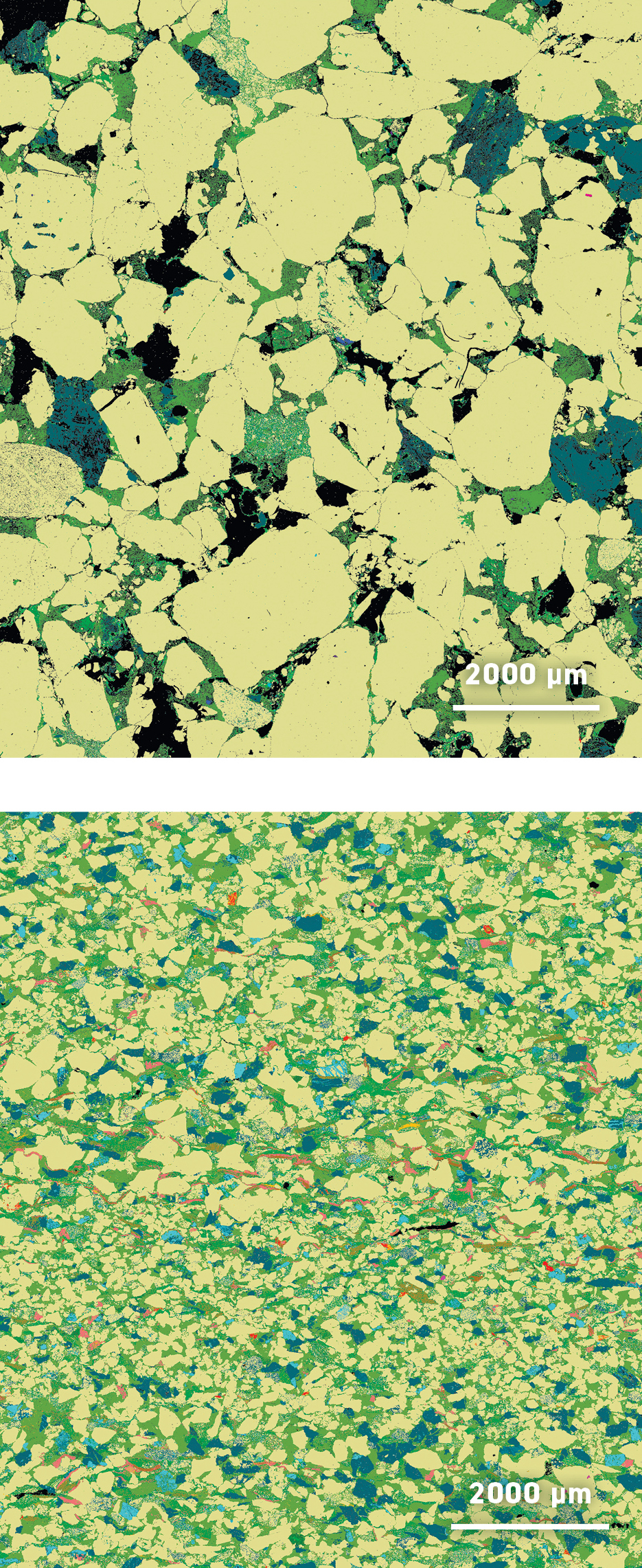One proposed solution is pumping this CO2 into emptied oil reservoirs deep in the earth. Oil reservoirs are generally made up of an oil-filled porous rock, like sandstone, surrounded by an impermeable rock, called a cap-rock, that traps the oil. This cap-rock can also trap CO2. Once in the reservoir, CO2 can dissolve into ground water to form an acidic solution that over thousands of years, will crystallise into carbonate minerals, trapping the CO2 in a solid form.

Micrographs of thin sections from a reservoir sandstone (top) and a cap-rock that prevents CO2 migration (bottom) taken using QEMSCAN.
Dr Julie Pearce and her team from the University of Queensland along with collaborators at the Australian Synchrotron and the Microscopy Australia facility at the Australian National University (ANU), have studied the Precipice Sandstone and Evergreen Formation in the Surat Basin in eastern Australia to evaluate its suitability as a CO2 injection site. QEMSCAN mineral mapping at Microscopy Australia’s ANU facility, as well as scanning electron microscopy and elemental microanalysis at our University of Queensland facility, were used to provide a detailed picture of the porosity, mineralogy and composition of these rocks. This data was used to produce a model showing that several sites could potentially trap and convert CO2 into minerals for long-term storage.
The Moonie Oil Field is in this region of south-east Queensland and has been proposed as a site for carbon capture. Operators at the site are already considering pumping CO2 under pressure into oil reservoirs, to squeeze more oil out. If they can then trap this pumped-in CO2 it would hit two birds with one stone, helping to mitigate climate change.
J. K. Pearce et al., International Journal of Coal Geology 2022
DOI: 10.1016/j.coal.2021.103911
Sample from a cap-rock that prevents CO2 migration taken using QEMSCAN.
May 15, 2023